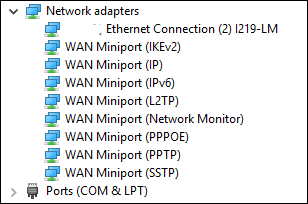I have just recently upgraded my pc with a new motherboard (intel strix b250f gaming), cpu (i5.7600) and a clean install of windows 10 pro. My internet connection is via a gigabit TP link powerline adapter and I have a netgear 10/100 switch. I was originally using a older powerline adapter, but I have upgraded to see if it will help with this problem. I did not have any issues on my older windows 7 system with the exact same network setup.
At totally random times I can see my internet connection icon change and I loose my connection, but I dont loose my physical link and can see the switch is still working. I can also still see the powerline adapters via the tp link utility. All I have to do to get it working again is go into the Intel Ethernet connection I219-v properties and change the link speed from either Auto or 100 mbps full duplex. it does not matter what it's on I just have to swap it and the internet starts working again.
I have checked for updates, made sure I have the latest drivers and bios for my motherboard. disabled firewalls, removed all parts of the internet connection apart from the absolute essentials, changed my powerline adapters, added the switch so I can see the link status, changed from dhcp to fixed IP and DNS, removed all power save options and tried every trick I could fine on the internet with regards to windows 10 internet dropouts.
It still just drops out and sometimes recovers it's self., but most of the time I switch the link speed and it's back up, but is super annoying.
I hope someone can help.


